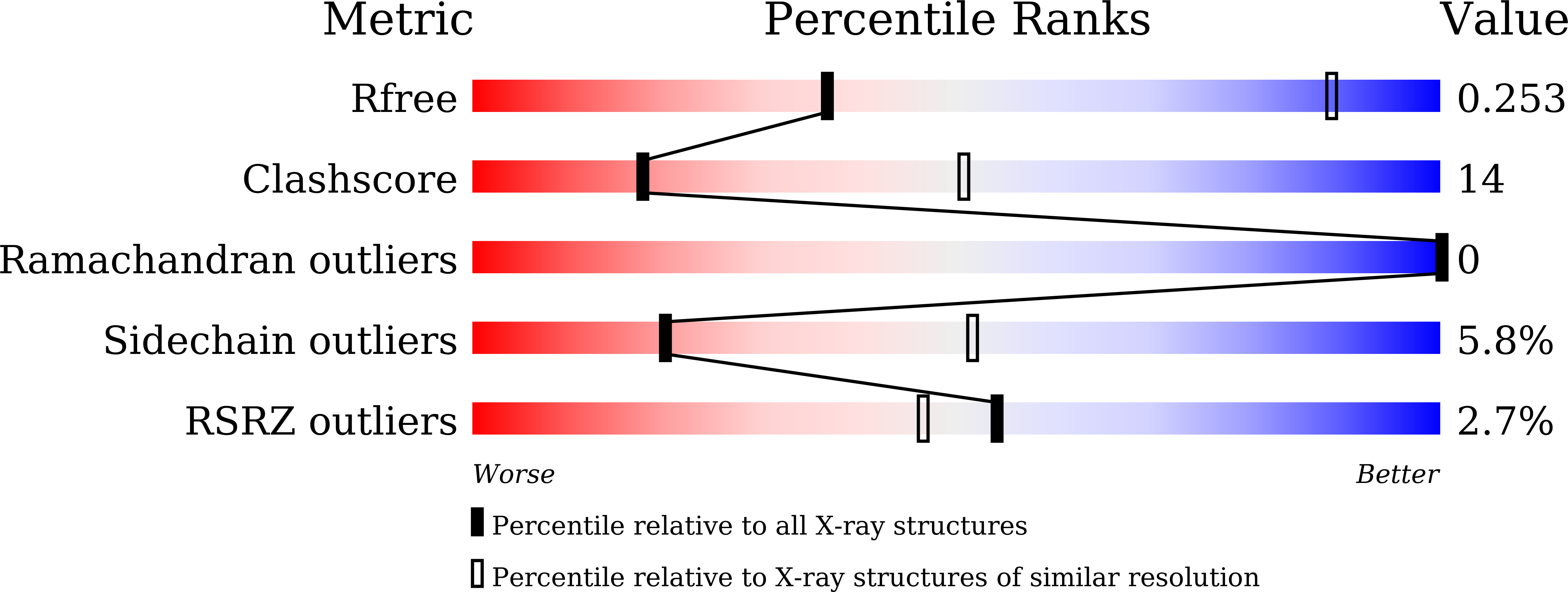Structural basis for -35 element recognition by sigma4chimera proteins and their interactions with PmrA response regulator.
Lou, Y.C., Chou, C.C., Yeh, H.H., Chien, C.Y., Sadotra, S., Hsu, C.H., Chen, C.(2020) Proteins 88: 69-81
- PubMed: 31293000
- DOI: https://doi.org/10.1002/prot.25768
- Primary Citation of Related Structures:
6IDO - PubMed Abstract:
In class II transcription activation, the transcription factor normally binds to the promoter near the -35 position and contacts the domain 4 of σ factors (σ 4 ) to activate transcription. However, σ 4 of σ 70 appears to be poorly folded on its own. Here, by fusing σ 4 with the RNA polymerase β-flap-tip-helix, we constructed two σ 4 chimera proteins, one from σ 70
4 70 c and another from σ S4 S c of Klebsiella pneumoniae. The two chimera proteins well folded into a monomeric form with strong binding affinities for -35 element DNA. Determining the crystal structure of4 S c in complex with -35 element DNA revealed that4 S c adopts a similar structure as σ 4 in the Escherichia coli RNA polymerase σ S holoenzyme and recognizes -35 element DNA specifically by several conserved residues from the helix-turn-helix motif. By using nuclear magnetic resonance (NMR),4 70 c was demonstrated to recognize -35 element DNA similar to4 S c . Carr-Purcell-Meiboom-Gill relaxation dispersion analyses showed that the N-terminal helix and the β-flap-tip-helix of4 70 c have a concurrent transient α-helical structure and DNA binding reduced the slow dynamics on4 70 c . Finally, only4 70 c was shown to interact with the response regulator PmrA and its promoter DNA. The chimera proteins are capable of -35 element DNA recognition and can be used for study with transcription factors or other factors that interact with domain 4 of σ factors.
Organizational Affiliation:
Institute of Biomedical Sciences, Academia Sinica, Taipei, Taiwan, ROC.
















